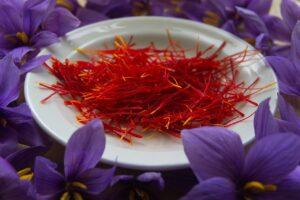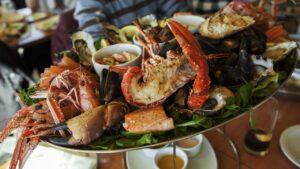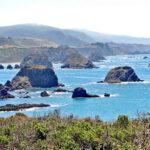Food is a basic necessity for human survival, but some people take it to a whole new level. Some foods are so rare, exotic, or just plain delicious that they can command astronomical prices. From truffles to caviar, here are some of the world’s most expensive foods.
List of World’s Most Expensive Foods
Truffles
Truffles are a type of fungi that grow underground and are highly prized for their unique aroma and flavor. They are notoriously difficult to find, which is why they can cost as much as $3,000 per pound. The most expensive truffle ever sold was a white truffle that weighed 4.16 pounds and sold for $61,250 at a charity auction in 2014.
Caviar

Caviar is a delicacy made from the eggs of the sturgeon fish. The best caviar comes from the Beluga sturgeon, which is now an endangered species, making its eggs even more valuable. Caviar can cost up to $35,000 per kilogram, depending on the quality and rarity.
Kobe Beef
Kobe beef is a type of wagyu beef that comes from the Tajima strain of wagyu cattle in Japan. The cows are fed a special diet and given massages to ensure the meat is tender and flavorful. Kobe beef can cost as much as $300 per pound.
Saffron

Saffron is a spice that comes from the crocus flower and is used to add flavor and color to dishes. It is the most expensive spice in the world, with prices ranging from $5 to $10 per gram. It takes over 200,000 crocus flowers to produce just one pound of saffron.
Matsutake Mushrooms
Matsutake mushrooms are a rare and highly prized delicacy in Japan. They are only found in certain areas during the autumn months and can sell for as much as $2,000 per kilogram. In recent years, the matsutake mushroom harvest has declined due to deforestation and other environmental factors, making them even more valuable.
Foie Gras
Foie gras is a luxury food product made from the liver of a duck or goose that has been specially fattened. The process of making foie gras is controversial, as it involves force-feeding the birds through a tube. The delicacy can cost as much as $200 per pound.
White Asparagus
White asparagus is a variety of asparagus that is grown in the dark, which prevents it from turning green. The process of growing white asparagus is time-consuming and labor-intensive, which is why it can cost up to $8 per pound.
Wagyu Beef
Wagyu beef is a type of beef that comes from the wagyu breed of cattle in Japan. It is known for its marbling and flavor, which is why it can cost as much as $200 per pound.
Fugu
Fugu is a type of pufferfish that is considered a delicacy in Japan. The fish is highly toxic if not prepared correctly, which is why only licensed chefs are allowed to prepare it. A single serving of fugu can cost as much as $200.
Lobster

Lobster is a luxury seafood that is considered a delicacy around the world. The price of lobster can vary depending on the season and location, but it can cost as much as $100 per pound.
Some foods are so rare, exotic, or just plain delicious that they can command astronomical prices. Truffles, caviar, Kobe beef, saffron, matsutake mushrooms, foie gras, white asparagus, wagyu beef, fugu, and lobster are some of the world’s most expensive foods. While many of these foods are associated with luxury dining experiences, some of them also have significant cultural and historical significance. For example, fugu has been consumed in Japan for centuries and is considered a delicacy, despite its toxicity. Similarly, matsutake mushrooms have been part of traditional Japanese cuisine for centuries and are used in various dishes.
The high price of these foods is not just due to their rarity or flavor. In many cases, the production process is also incredibly labor-intensive and time-consuming, which adds to their value. For instance, Kobe beef cattle are fed a special diet, given massages, and raised in a specific way to ensure that the meat is tender and flavorful. Similarly, white asparagus is grown in the dark, which makes it more tender and flavorful than its green counterpart, but also takes longer to cultivate.
While many people may never have the opportunity to taste these expensive foods, they still have a significant impact on the food industry. For example, the high price of caviar has led to the development of more affordable alternatives such as salmon roe or trout roe. Similarly, the popularity of wagyu beef has led to the development of other high-quality beef breeds in different parts of the world, which are also known for their marbling and flavor.
In addition to their impact on the food industry, these expensive foods also have environmental and ethical implications. For instance, the production of foie gras involves force-feeding ducks or geese, which many animal welfare activists consider cruel. Similarly, the demand for certain luxury seafood such as lobster has led to overfishing and the depletion of certain marine species.
The world’s most expensive foods are not just about luxury or taste, but also about rarity, cultural significance, and the production process. While some of these foods may seem inaccessible to the average person, they still have a significant impact on the food industry and our wider society. As such, it is essential to consider the ethical and environmental implications of our food choices and strive to make more sustainable and responsible choices wherever possible.
Keywords: Expensive foods, Truffles, Caviar, Kobe beef, Saffron, Matsutake mushrooms, Foie gras, White asparagus, Wagyu beef, Fugu, Lobster, Luxury dining, Culture, Environment, Ethics, world’s most expensive foods, most expensive foods, list of most expensive foods, most expensive foods list, top most expensive foods, most expensive foods to try, top most expensive foods to try, most expensive foods to try during vacation
Check out our Novel Writing Workbooks
Check out Little Tree Food Forest for articles on food forests and homesteading.
Check out FoodieScapes for articles on growing, fermenting and preserving food
Check out StoryScapes.World for articles on writing.
Subscribe to our newsletter to get information delivered to your inbox on homesteading, growing food, food preparation, travel, fishing, and more.











